Vegetable Paella with Shiitake Bacon
Seafood and chorizo aren’t necessary for a great paella but there are important elements to make sure you get tasty and satisfying results every time, socarrat and all. I share them here along with this fall-inspired vegetable paella topped with my favorite autumn vegetables.
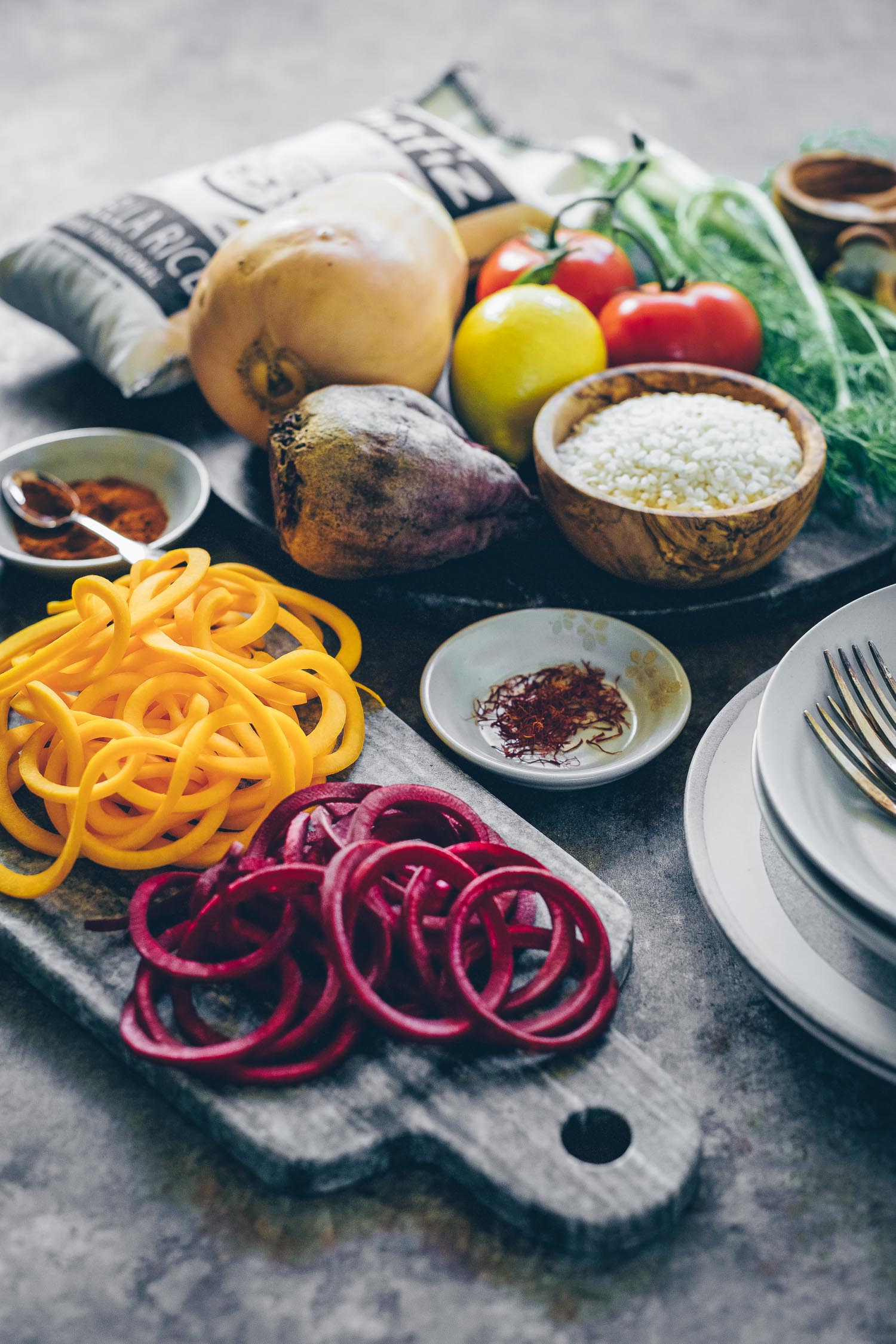
It started with a friend’s post on Facebook a few weeks ago. She shared pictures of a meal she was having with friends and as soon as my eyes fell on the paella at their table I haven’t been able to get it off my mind since.
It had been at least a year since I last prepared the Valencian classic with more popular ingredients like peppers, chicken, chorizo and seafood. With fall in the air it seemed fitting to showcase my favorite fall vegetables instead of using meat while also keeping the integrity of the dish intact. (Paella connoisseurs will add: peas and chorizo are not traditional Valencian paella ingredients; rabbit, duck and snails are, though.)
But before we go to my recipe I want to share the key elements that make a great paella.
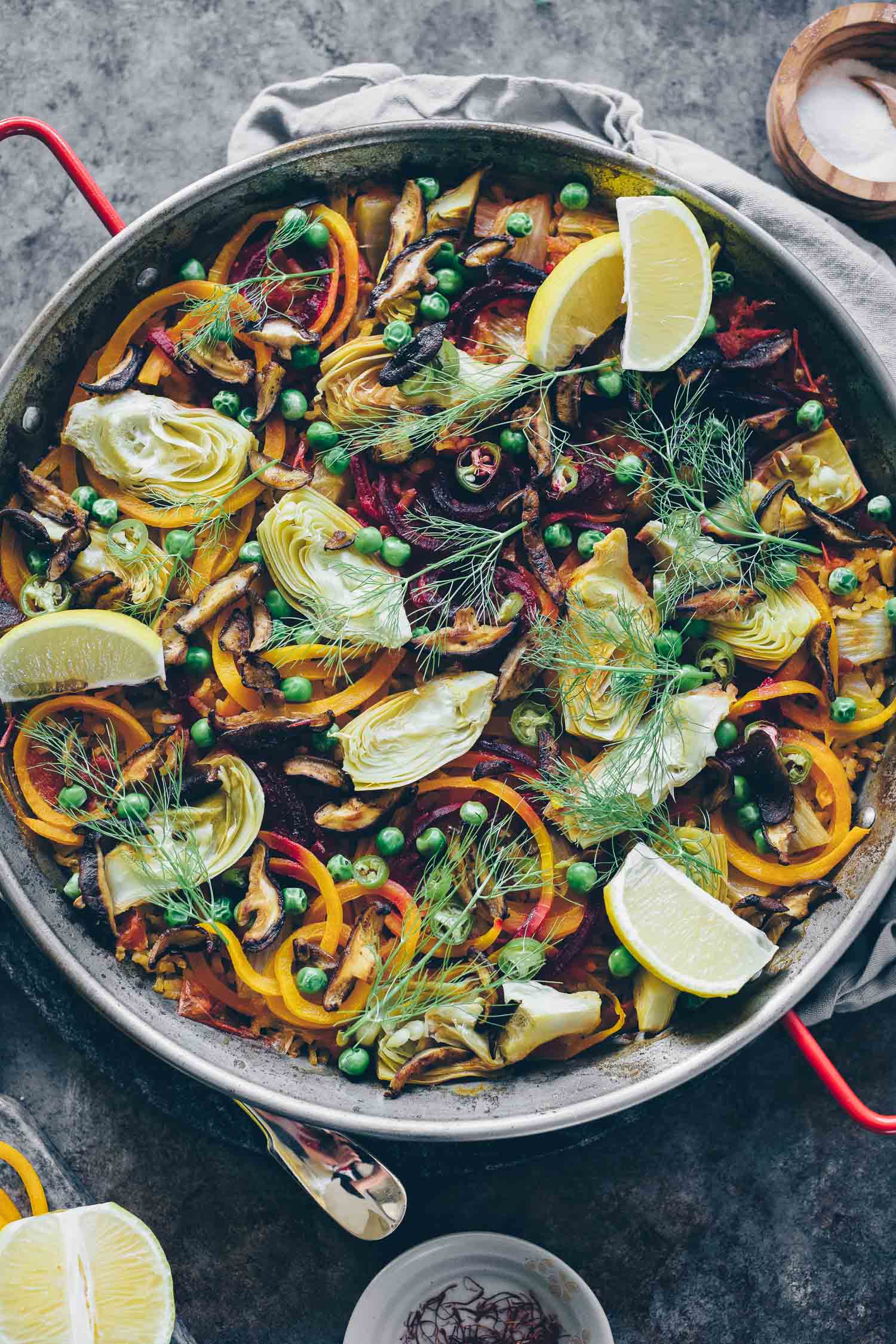
What are the Keys to a Great Paella?
Life’s too short to be hung up on rules, especially when it comes to food. Really, any paella that you enjoy and you’d be happy to make again and again is a good paella. That said, there is value in sticking to some key elements–mainly to ensure that you consistently create a winning paella. Most versions I come across in restaurants are either too oily or have too much unabsorbed liquid. When preparing paella at home these are the things I keep in mind:
- Rice – Bomba rice, or paella rice, is used for a reason. Paella rice is a short-grain variety that absorbs more liquid, cooks quickly, maintains its shape and doesn’t get starchy during the short cooking time. This is important because paella is not supposed to be creamy like risotto. The cooked grains should be loose and hold their shape. (That said, in a pinch arborio rice would be a better substitute for paella than long grain rice or brown rice–the latter, especially, would take too long to cook. However, arborio rice would require less cooking liquid to keep the grains from getting creamy.)
- Paella Pan – Paella was named after the pan it is traditionally cooked in, a paellera. Unlike pans we use everyday, a paella pan is made of a thin material, shallow and wide. The rice layer in paella is meant to be thin so a shallow, wide pan allows for space for the rice to cook properly and to develop the coveted socarrat (more below). This is the pan I use and it comes in several sizes. I use the 13-inch pan which cooks the rice evenly on my gas stove–it serves four (or two with leftovers).
- Sofrito – While there are numerous flavor combinations for paella, most of them will have sofrito in common. For paella the flavor building blocks come from the sautéd aromatics–garlic, onions and tomatoes (and sometimes peppers). You’ll see below that I substituted one ingredient here to keep with my fall theme and it worked very well.
- Socarrat – Socarrat is the flavorful crispy, caramelized crust that forms as the rice cooks and absorbs the liquid. For the new cook, the crusty bottom may seem like a failed paella attempt but you want this–the socarrat is not burned rice, it’s toasted and loaded with flavor.
- Stock – While it’s fine to use water in paella most recipes get a much better flavor boost from seafood stock or chicken stock. The rice absorbs the liquid and adds an extra layer of flavor to the dish.
- Saffron and Smoked Sweet Paprika (Pimentón)– Both ingredients are very common in paella. I like to use both–saffron for color and paprika for flavor. But if you’re determined to prepare paella and don’t have saffron or if it’s cost prohibitive, skip it. Don’t let it keep you from enjoying paella at home. On the other hand, I do not recommend skipping the smoked paprika (look for Pimentón de la Vera). For me, the rich, bold flavor of Spanish smoked paprika is important to a good paella. Sweet Hungarian paprika has a place in my pantry but it would not be the best substitute as it doesn’t have the same smoky flavor.
Paella Cooking Tips
- Don’t Stir – After you add the broth, you can stir to distribute the ingredients evenly in the pan but don’t stir once the rice starts to cook. Leaving the rice alone helps with the development of socarrat.
- Don’t Cover – Paella is traditionally cooked uncovered and it’s ideal for the liquid to cook down quickly but it’s not a deal breaker. I find that covering the pan helps at times. If you have an uneven heat source it may be necessary to capture some steam to cook the rice evenly. I usually cover mine for part of the cooking time. Alternatively, I’ve also prepared my paella on the stovetop, covered it in foil and finished cooking it in the oven with great results.
- Don’t Overload – Don’t load up a paella with too much meat or fish. Paella started out as a humble dish and the rice should be the star.
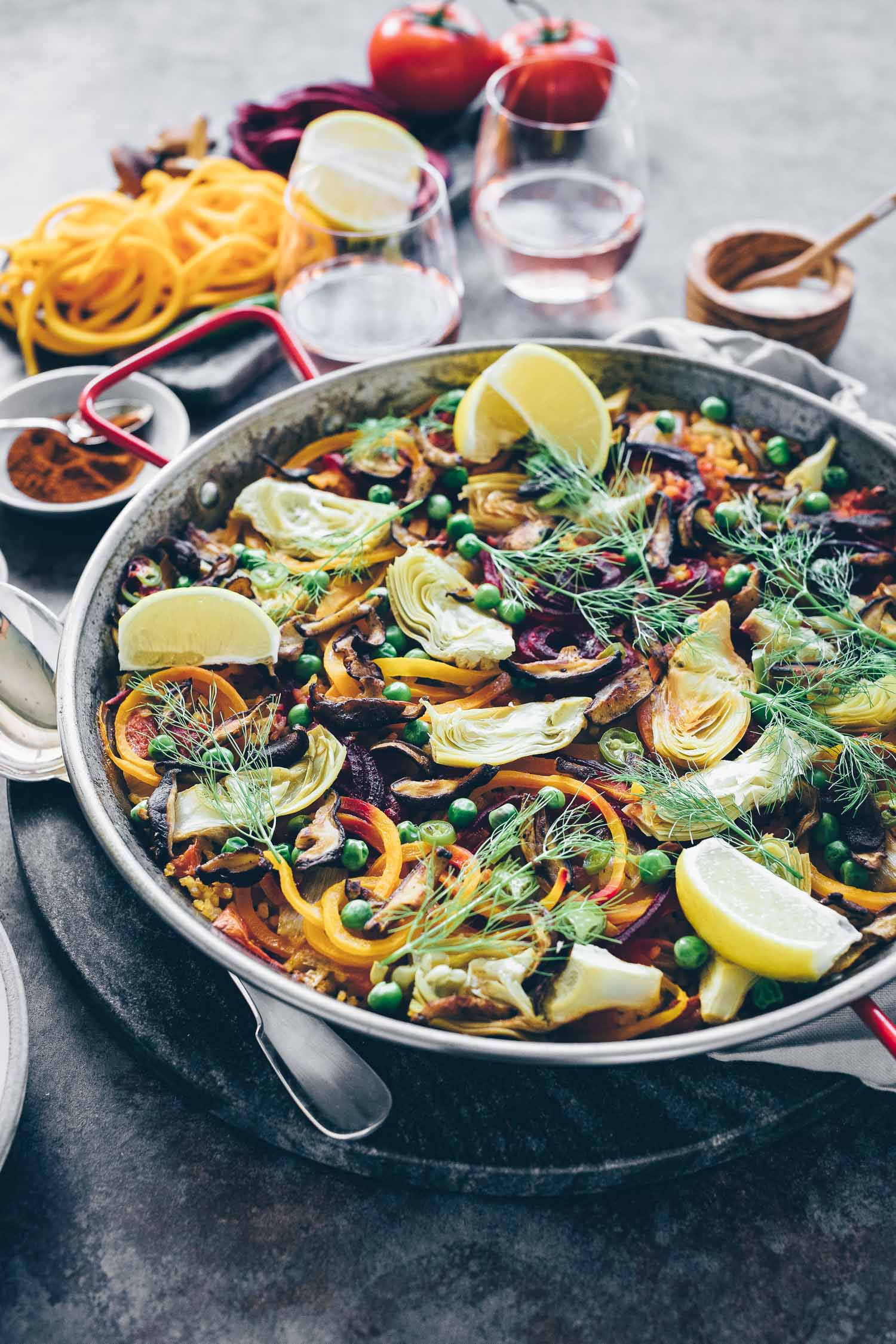
My Vegetable Paella
With the rules out of the way, I want to share the vegetable paella I was inspired to make. The ingredients are more fall-inspired than traditional but it’s a winner just the same.
Vegetables are not uncommon in paella. Besides the sofrito, even meat-based versions will usually have bell peppers, green beans, asparagus, peas or artichokes mixed in. For this fall-inspired creation, besides using artichokes and peas I incorporated the three vegetables I love to serve together this time of year for a pleasant sweet/earthy mix: butternut squash, beets and fennel.
I used the fennel in place of onions in the sofrito and even if you’re convinced you don’t like this vegetable, please give it another chance. The anise flavor mellows significantly during cooking so don’t think you’ll be eating rice and licorice if you use it. The spiralized squash and beets are partly for looks but mainly because the cut is a good way to make sure they cook in the same amount of time as the rice.
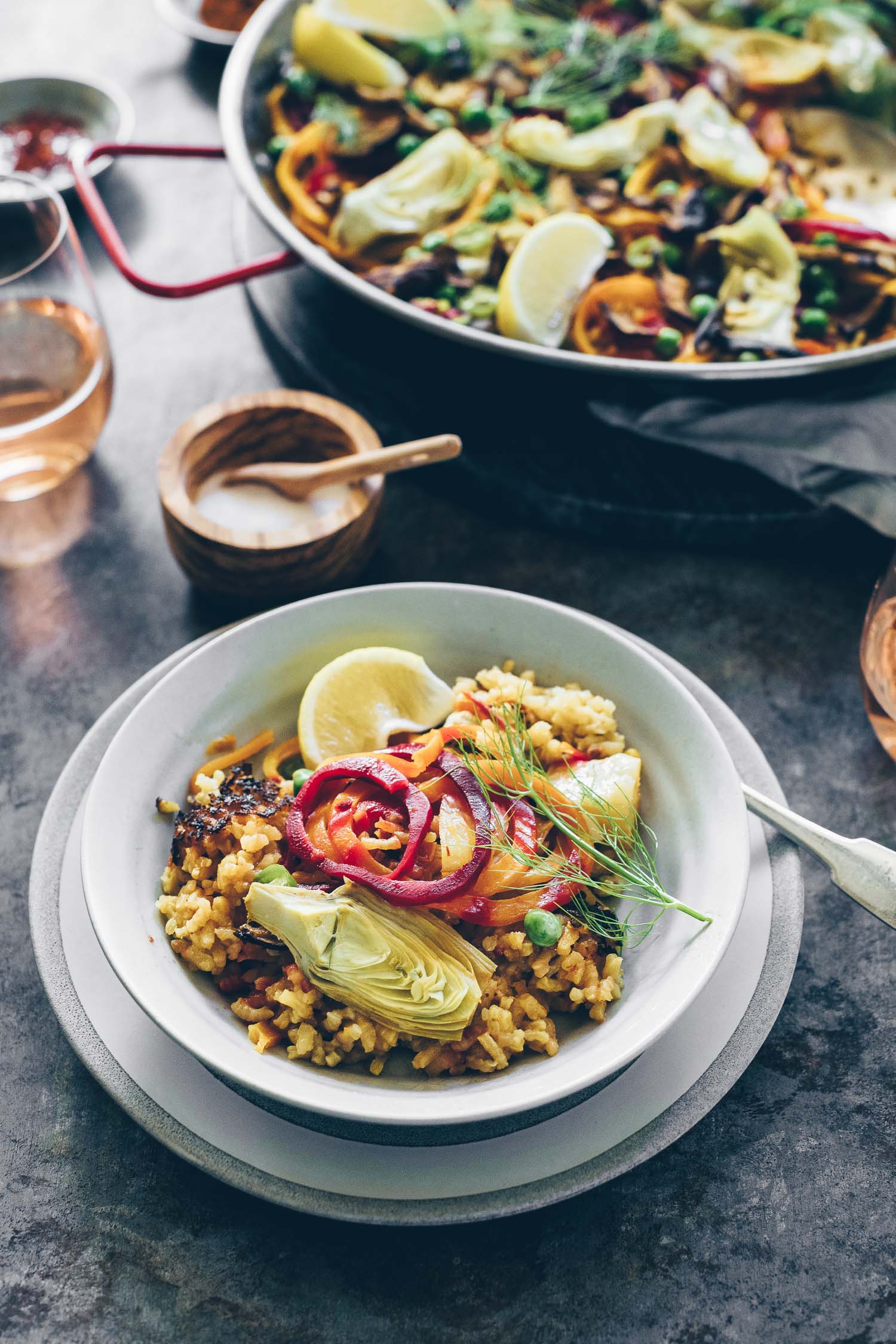
Two more unusual additions here are the shiitake mushrooms and Serrano peppers. I’ve waxed poetic about shiitake “bacon” for years–when sliced, seasoned with salt and pepper and either baked in the oven or pan browned, shiitake mushrooms pack a lot of umami and make a solid substitute for bacon. The sliced Serrano peppers add just the right amount of heat.
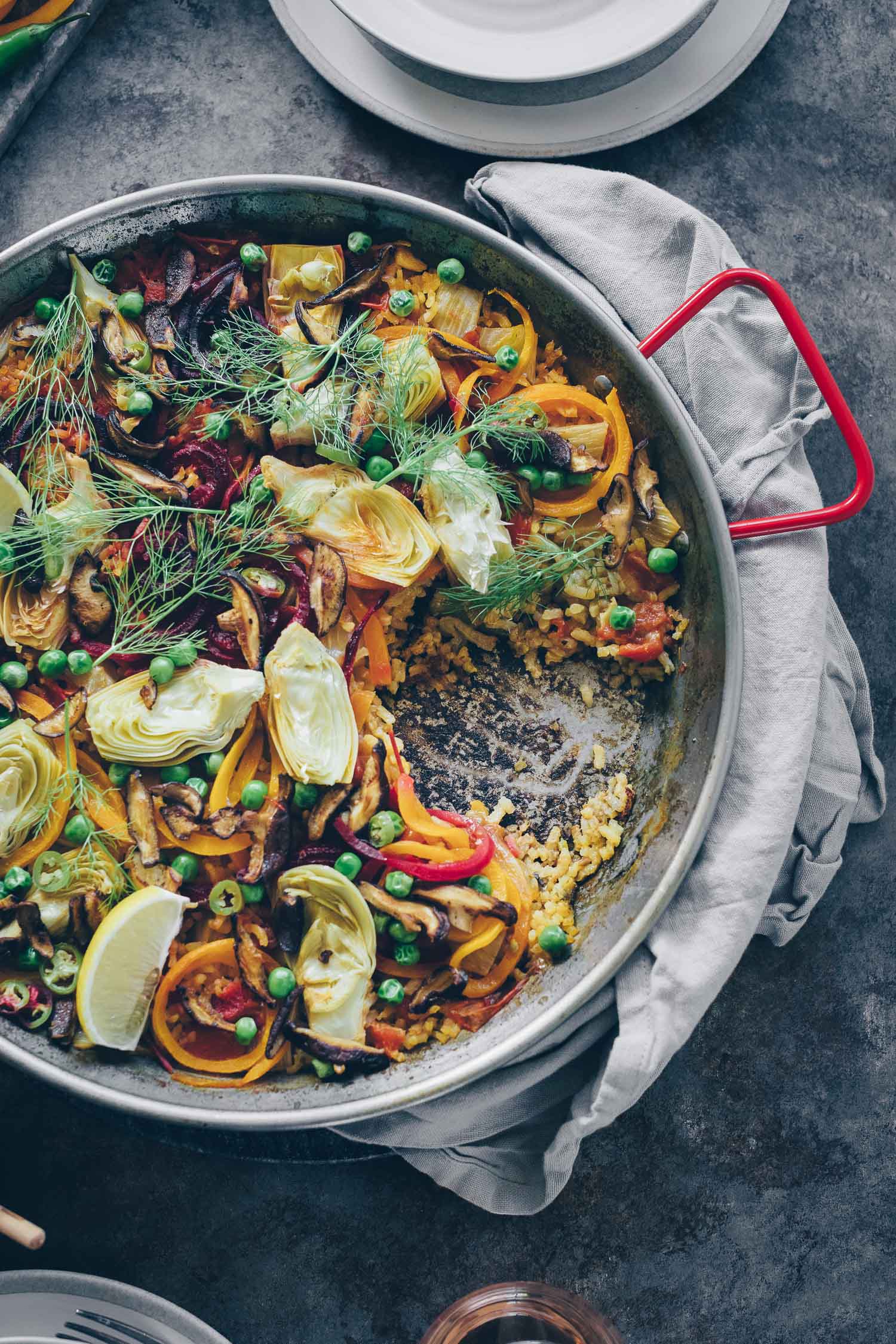
Despite the absence of meat, this paella was not short on flavor thanks to the paprika, peppers and shiitake bacon. I was initially doubtful about skipping the seafood or clam juice for this recipe but they weren’t necessary. I did use low-sodium chicken stock here but you can use your favorite vegetable broth to make this recipe completely vegan. The important thing is to be mindful of the keys I shared above–other than that, make it your own and use your favorite supporting ingredients. I bet you’ll make any paella lover happy.
Here are related recipes from the archives you might enjoy:
- Fideua – A noodle version of classic paella.
- Red Rice with Roasted Squash, Fennel and Beets
- Penne with Roasted Shiitake Mushrooms (Shiitake Bacon), Eggplant and Sambal
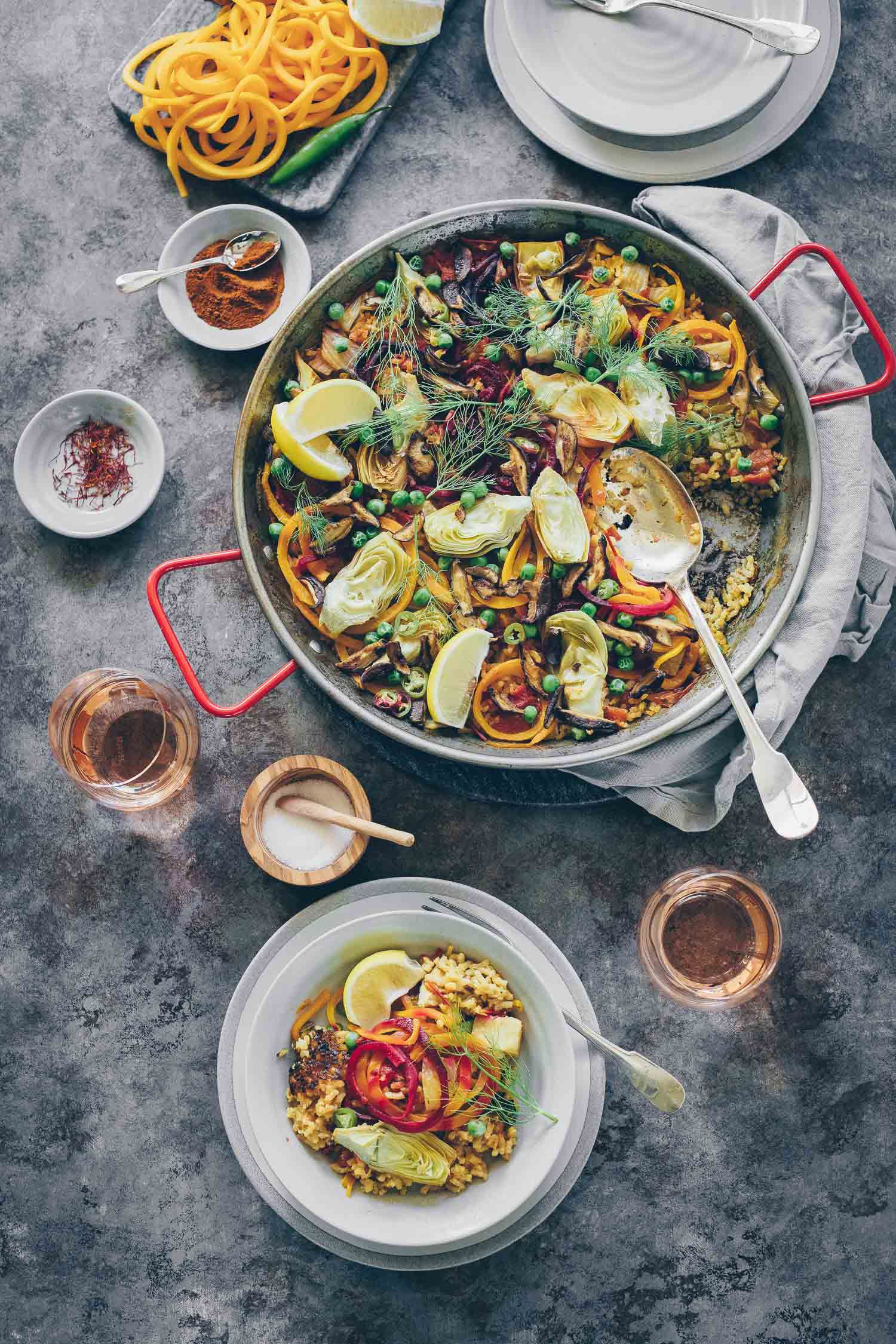
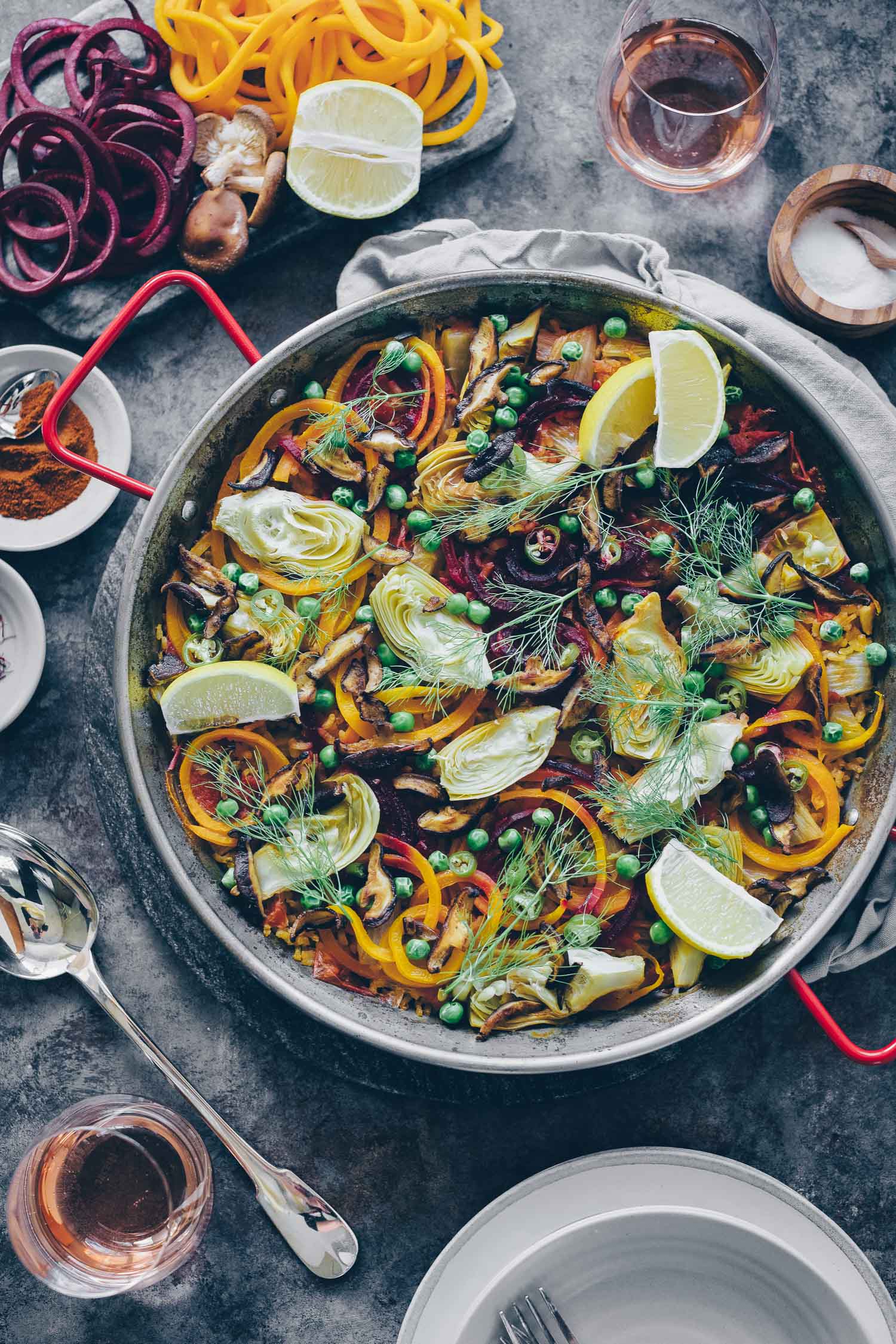
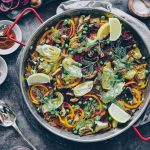
Vegetable Paella with Shiitake Bacon
Ingredients
- 1/2 butternut squash, peeled and spiralized
- 1 red beet, peeled and spiralized (see note)
- 1 fennel bulb, chopped (fronds reserved for garnish)
- 1 15 ounce can artichoke quarters, drained
- 1/2 cup frozen peas
- 3-6 ounces shiitake mushrooms, sliced
- 2 tomatoes, chopped
- 2 cloves garlic, chopped
- 1 1/4 cup Paella rice
- 3 1/4 cups stock, warm (vegetable for vegan, I used chicken)
- 1 pinch saffron
- 1/4 teaspoon smoked Spanish paprika
- salt and pepper, to taste
- Olive oil, a few tablespoons
- lemon wedges for garnish
Instructions
-
Warm the stock in a sauce pan, add the saffron and set aside. While the stock is warming up, in a small skillet, season the mushrooms with salt and pepper and cook with a tablespoon of olive oil over medium heat until they're golden. Set aside.
-
Using a paella pan, heat two to three tablespoons of olive oil over medium heat. Add the fennel and garlic, season with salt and pepper and cook for about two to three minutes until the garlic is fragrant. Add the tomatoes and paprika, turn up the heat a little, and cook for about four minutes or until the tomatoes have dissolved and their juice evaporated from the pan.
-
Add the rice to the tomato mixture and cook over medium heat for two minutes to allow the rice to toast a little and absorb some of the flavor from the sofrito.
-
Add three cups of the stock, turn up the heat and bring to a boil. Allow to boil for a minute or two then arrange the squash, beets and artichokes on top of the rice. Lower the heat to simmer, cover the paella pan with a lid or aluminum foil and let simmer for 10 minutes. After 10 minutes, check the paella. The rice should have absorbed a lot of the liquid but there should be some left behind. Most likely, you don't need the last 1/4 cup of stock but if it's too dry, add it along with the frozen peas. Cover again and cook for another five minutes. After five to six minutes the rice should be cooked and you should have heard some crackling from the pan indicating that a socarrat was forming. Once the rice is cooked sprinkle the shiitake bacon on top, garnish with lemon wedges and the fennel fronds and serve.
Recipe Notes
Squash and Beets: I didn't want to crowd the top of the paella so I only used 1/2 the spiralized portions of each. I sautéed the remainder separately and served alongside the paella.






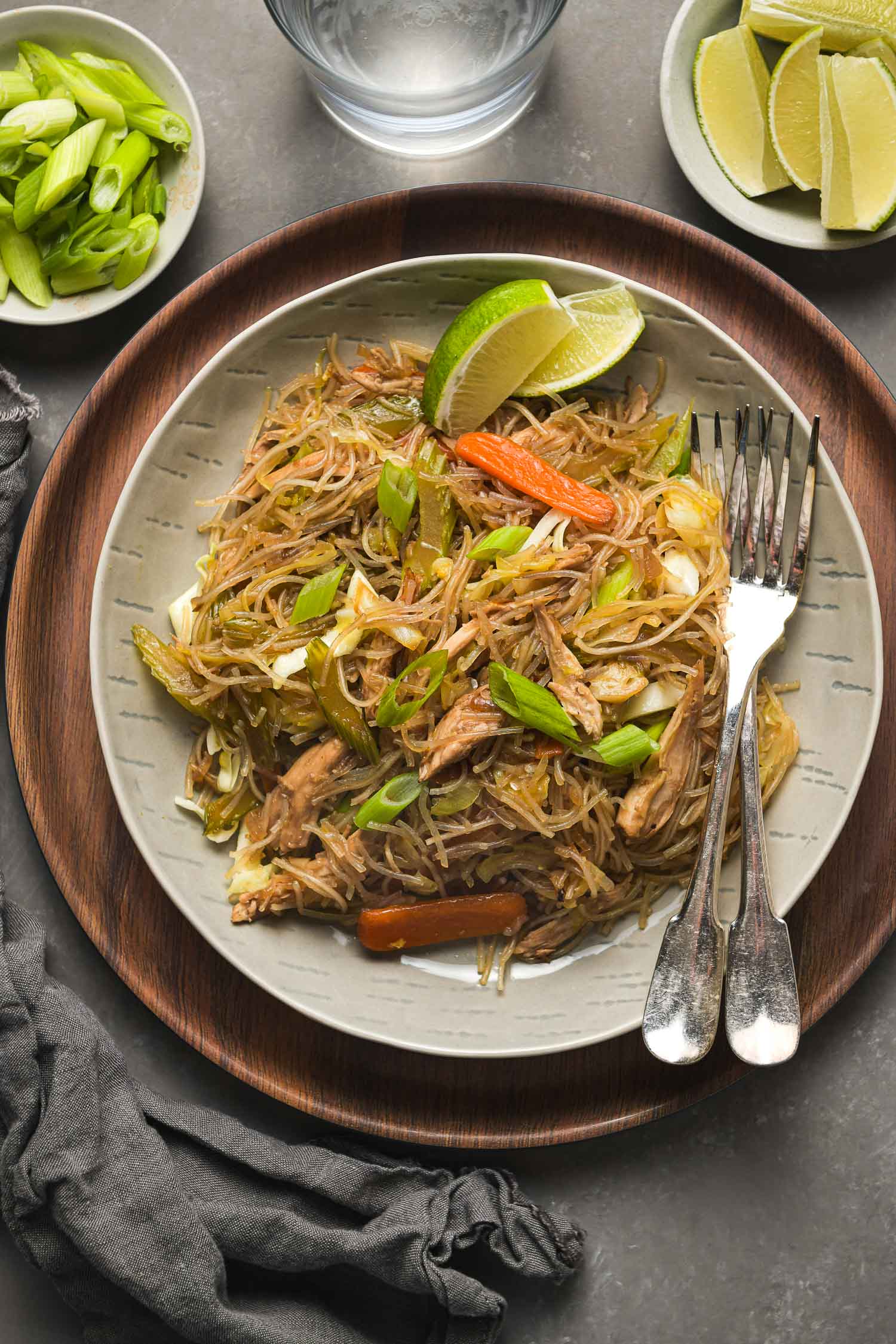
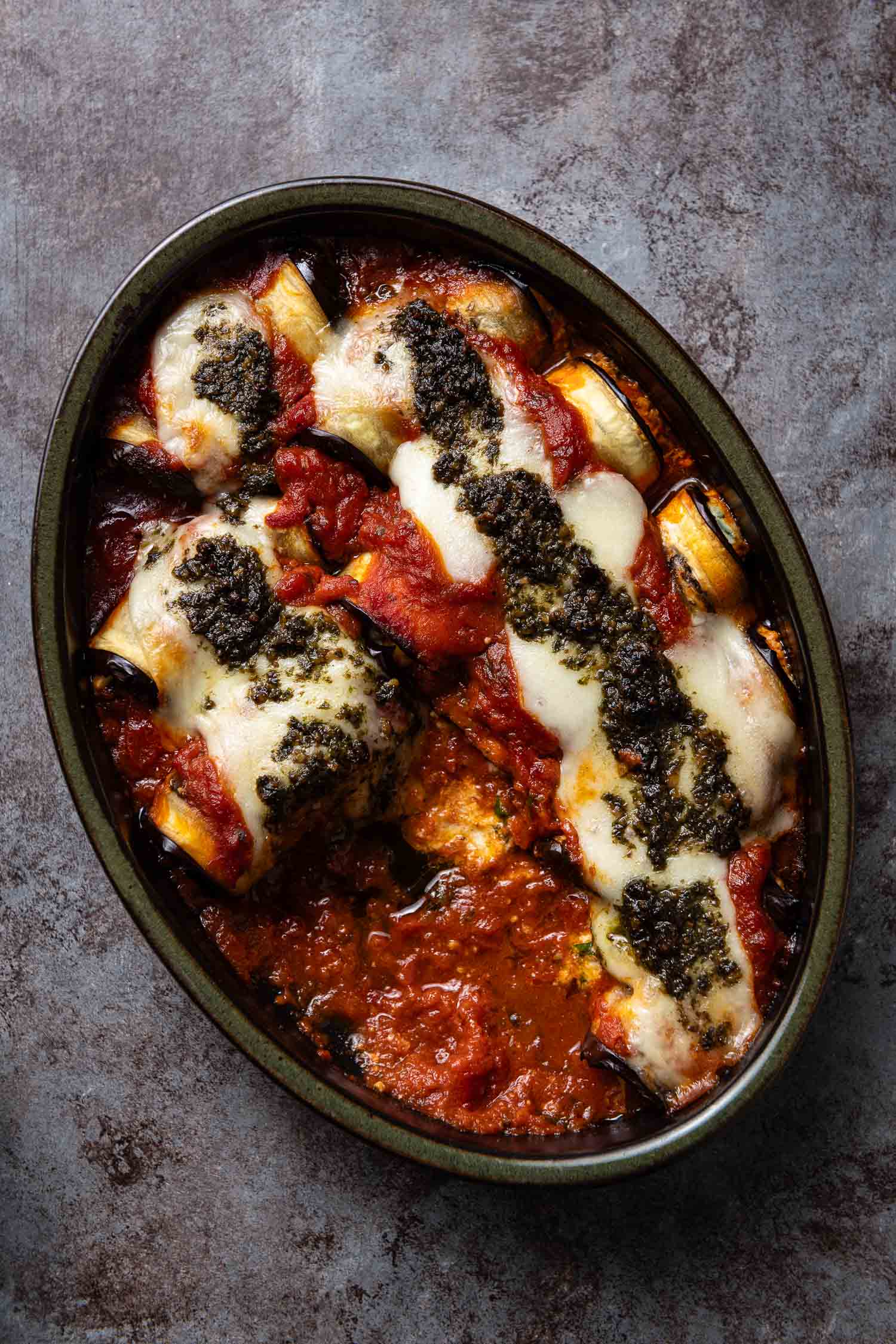
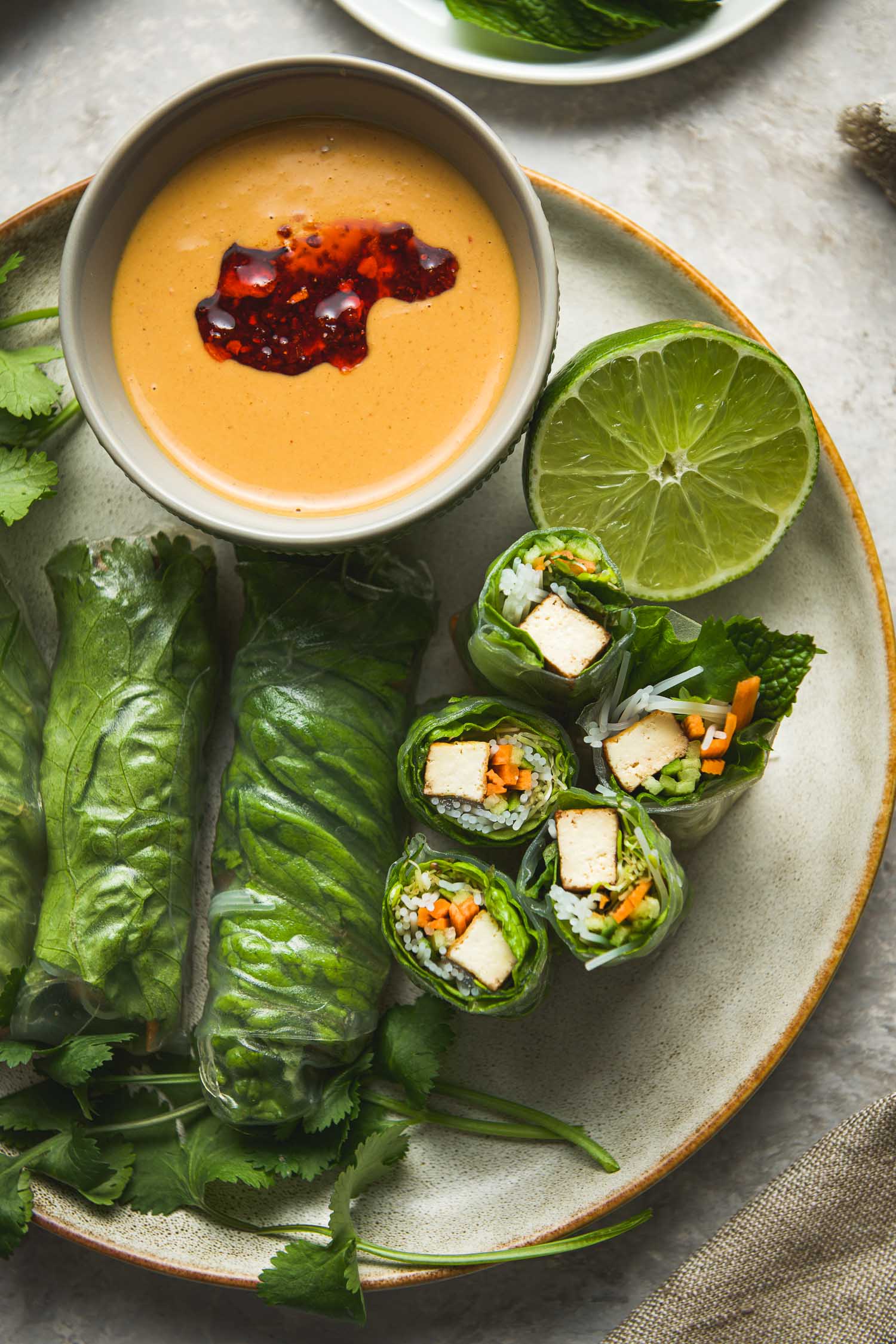

I’m on the verge of inviting myself over for dinner – your paella looks incredible!! 🙂 I’ve always loved risotto (especially in the fall and winter) and it’s high time to add paella to the line up as well. I love the fall vegetables you incorporated, and smoked paprika is a must!
Looks like a great recipe, with good tips for making Paella. I will definitely try it. Thanks.
I just love paella and am so loving your fall version of it (and not missing the meat!). Your photos are so beautiful, Jean!
I’ve made bad paella in my life. So bad that I gave away the pan. This post makes me regret that decision. GREG